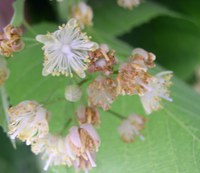Dakota Gardener: The harvest is in
(Click an image below to view a high-resolution image that can be downloaded)
By Joe Zeleznik, forester
NDSU Extension
I ask the same questions to my farmer friends every fall – how were the crops this year? Were yields good? Was it an easy harvest?
These questions are good conversation starters though they may sound trite. But they’re asked sincerely. I hope my friends have a good harvest and that the land produces a bounty for them.
Farmers – and gardeners – sow seeds in the spring and harvest in the fall. The production of the forest and its harvest are different. This ecosystem is dominated by long-lived perennials that produce fiber but the broader ecosystem yields food in a number of different ways.
Trees can be harvested whole and turned into firewood or even timber that goes to a sawmill. We don’t see much timber in North Dakota, but a surprising number of people heat their homes with firewood.
The food production of forests is highly varied. This was a great year for hazelnuts in our region. Some areas were thick with American hazelnut while in other areas, the beaked hazel was bountiful. I picked a bucketful of American hazelnuts this fall in about 40 minutes. It was great.
That hazelnut bounty was easily shared this year. As I picked a red squirrel scolded me, as I was clearly in an area that he considered to be his own.
Two-and-a-half miles down the road, a mama black bear and her three cubs also were harvesting hazelnuts. I conceded that territory to them.
Do you forage? It looked like a good year for chokecherries and plums. How was juneberry production this year? We picked a lot of raspberries and blackberries when I was a kid.
The bounty of the forest includes wildlife. I was happy to help my neighbor the other day after he harvested a deer not far from home. It came out of a brushy swamp and went into the forest past my friend. However, he took two shots to take the deer.
The first shot hit a tree.
I decided not to tease my buddy about his attempt to “harvest” a tree that way. Admittedly, I’ve done the same thing on occasion.
In my own yard, the birds have been harvesting insects beneath the bark of the maple tree. They’re trying to get as much fat and protein as they can before winter sets in for good. While I’m happy for the birds I’m a little worried about all the bark they’re knocking off the tree. Bark provides trees with insulation and protection from environmental extremes.
During the summer, the insects harvested portions of leaves to produce their offspring. Now the birds are harvesting the insects. It’s a web of interactions in which we play a part. The oak trees produced acorns that fed the deer that is now in my neighbor’s freezer. Connections.
I became even more intimately involved in that network this year – I tried raising honeybees for the first time. My goal was simple – just keep the bees alive!
Fortunately, the bees thrived and we collected about 25 pounds of the lightest-colored honey that I’ve ever seen. It has a slightly minty flavor that comes from nectar of basswood trees (American linden).
Whatever seeds you sowed, I hope you had a great harvest this year.
NDSU Agriculture Communication – Nov. 15, 2022
Source: Joe Zeleznik, 701-730-3389, joseph.zeleznik@ndsu.edu
Editor: Kelli Anderson, 701-231-6136, kelli.c.anderson@ndsu.edu




